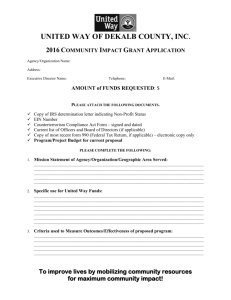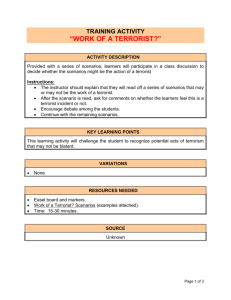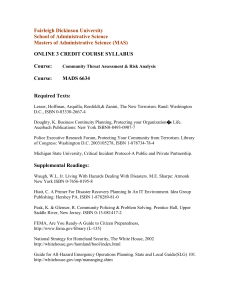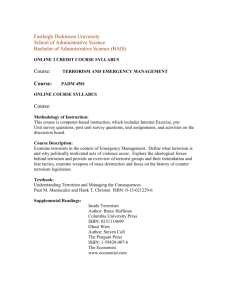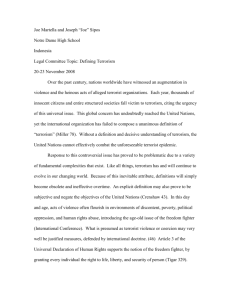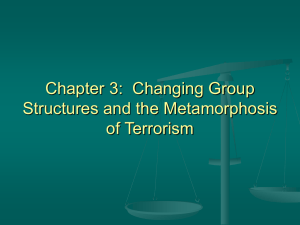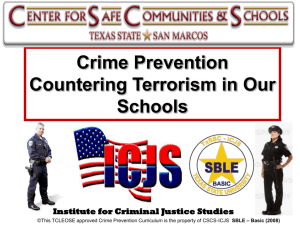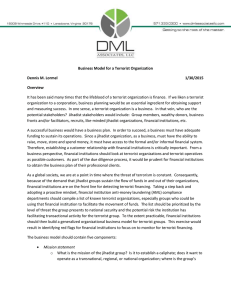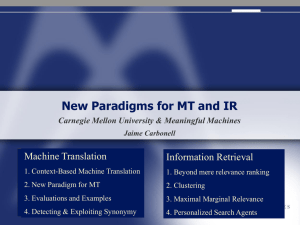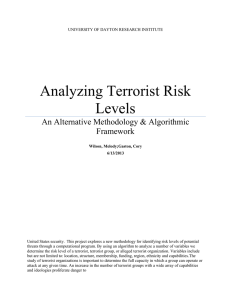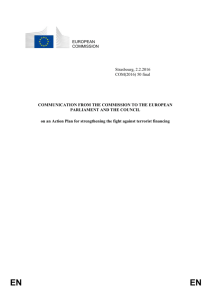Abstracts - The Open University
advertisement
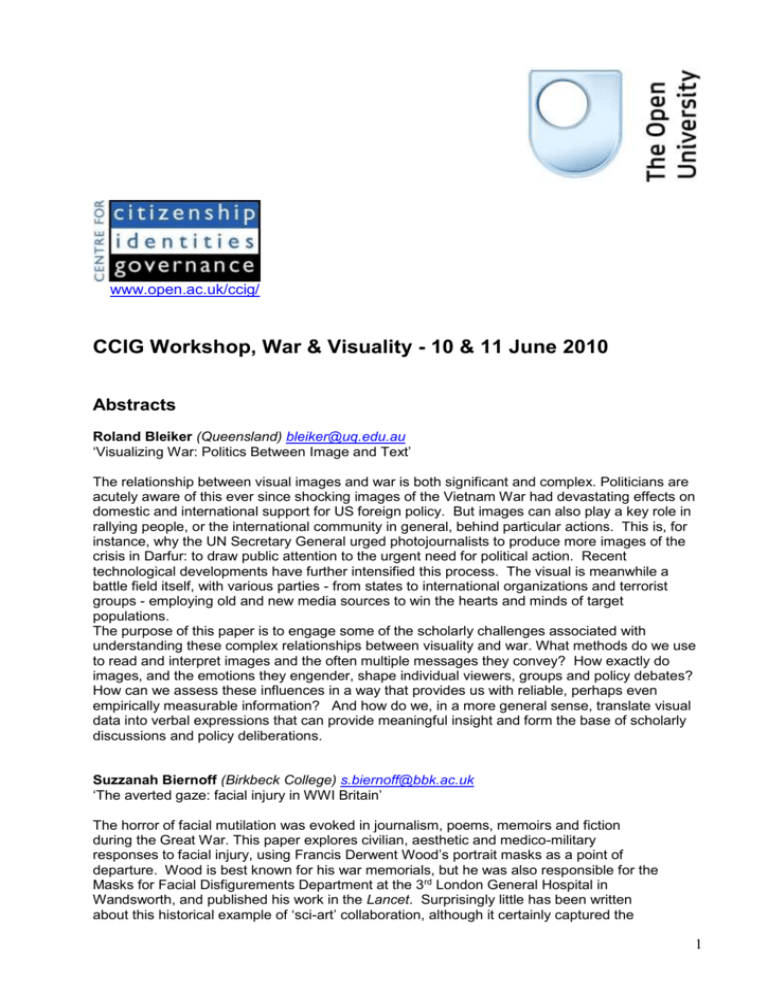
www.open.ac.uk/ccig/ CCIG Workshop, War & Visuality - 10 & 11 June 2010 Abstracts Roland Bleiker (Queensland) bleiker@uq.edu.au ‘Visualizing War: Politics Between Image and Text’ The relationship between visual images and war is both significant and complex. Politicians are acutely aware of this ever since shocking images of the Vietnam War had devastating effects on domestic and international support for US foreign policy. But images can also play a key role in rallying people, or the international community in general, behind particular actions. This is, for instance, why the UN Secretary General urged photojournalists to produce more images of the crisis in Darfur: to draw public attention to the urgent need for political action. Recent technological developments have further intensified this process. The visual is meanwhile a battle field itself, with various parties - from states to international organizations and terrorist groups - employing old and new media sources to win the hearts and minds of target populations. The purpose of this paper is to engage some of the scholarly challenges associated with understanding these complex relationships between visuality and war. What methods do we use to read and interpret images and the often multiple messages they convey? How exactly do images, and the emotions they engender, shape individual viewers, groups and policy debates? How can we assess these influences in a way that provides us with reliable, perhaps even empirically measurable information? And how do we, in a more general sense, translate visual data into verbal expressions that can provide meaningful insight and form the base of scholarly discussions and policy deliberations. Suzzanah Biernoff (Birkbeck College) s.biernoff@bbk.ac.uk ‘The averted gaze: facial injury in WWI Britain’ The horror of facial mutilation was evoked in journalism, poems, memoirs and fiction during the Great War. This paper explores civilian, aesthetic and medico-military responses to facial injury, using Francis Derwent Wood’s portrait masks as a point of departure. Wood is best known for his war memorials, but he was also responsible for the Masks for Facial Disfigurements Department at the 3rd London General Hospital in Wandsworth, and published his work in the Lancet. Surprisingly little has been written about this historical example of ‘sci-art’ collaboration, although it certainly captured the 1 imagination of contemporary journalists. ‘Magical results are being achieved,’ reported The Times in August 1916, ‘by the provision of masks perfectly counterfeiting the lost section of the physiognomy.’ The aim of the paper is to place Wood’s work in its cultural context, and to explore the role of art and artifice in the reconstruction of identity and ‘humanity’. Nicholas Harrison (King’s College London) nicholas.harrison@kcl.ac.uk ‘Yesterday's mujahiddin: Sources of Islamic inspiration in Pontecorvo's Battle of Algiers’ Since it was first screened in 1966, Gillo Pontecorvo's Battle of Algiers has prompted fierce hostility and deep admiration among widely divergent audiences, including (it seems) the CIA and various terrorist organizations. This paper will launch off from negative reactions to the film expressed in May 2004 in the influential cinema journal Cahiers du cinéma, whose critics seemed particularly worried by the film's treatment of religion and the possible inspiration it might provide to today's Islamists, in Algeria and beyond. The paper will examine closely the film's allusions to Islam – allusions that, as the Cahiers critics noted, have been invisible to many audiences, yet to others may seem incendiary – explaining them by reference to historical sources and to a recent interview with the film's producer and star, Saadi Yacef. In this way, questions emerge about the uses to which Islamic energies were put by the FLN (Front de libération nationale) at the time of the Algerian war of independence, as well as about the role of the film in capturing that material. Andrew Hill (The Open University) a.hill@open.ac.uk ‘War & Beauty’ What can beauty tell us about war? Beauty is a category that figures as marginal to contemporary conceptions of war and conflict. This paper scrutinises how the ways beauty functions and beauty’s effects serve to illuminate war. The paper scrutinises beauty’s role as casus belli, beauty’s status as a target or lure, and beauty’s capacity to offer a means of defence and source of protection. In so doing a range of conflicts are surveyed including World Wars I & II, the War on Terror and the break-up of Yugoslavia. Sebastian Kaempf (The University of Queensland) s.kaempf@uq.edu.au ‘Waging War in the New Media Age’ By the 21st Century, the emergence of new media technology has fundamentally started to transform not only the means through which contemporary war is being waged but also war's visual representation. Contemporary war has a new frontline, one where war is no longer fought physically but virtually and where the actors involved on both sides have replaced bombs and bullets with weapons in the form of bites and bandwidths. This paper investigates these changes in the military-media-entertainment industries and their ethical implications for the 'War on Terror'. In particular, the paper examines the growing use of digital images and internet videos as strategic weapons employed by the US military and its adversaries in Afghanistan and Iraq. Gabriel Koureas (Birkbeck College) g.koureas@bbk.ac.uk ‘Visualising the Invisible: constructing and remembering the image of the terrorist during the War of Independence in Cyprus 1955-1959’ 2 Recent debates and representations of terrorism point to an ahistorical society in which terrorism provides an ‘unexamined and seemingly natural motivation in the construction of plots’ (Jameson 1984) Terrorism is also one of those phenomena that have surfaced as a Post-War cultural debate thus creating specific structures of feeling associated with the image of the terrorist. Most importantly, the visuality of the terrorist had always been problematic because of the perceived invisibility of the terrorist. On another but parallel level the definition of terrorism itself is problematic in terms of what constitutes a terrorist act depending usually on a relational position of power and hegemony. The paper aims to address these issues by concentrating on the image of the ‘terrorist’ as it was constructed during the war of independence from British colonial rule in Cyprus during 19551959 in order to discuss the representation of the terrorist in visual and literary cultures and resurface the wounds of memory that are associated with such events rather than concentrating on the wounds of the acts of terrorism that tend to veil the historical specificities of the events. In more detail the paper will compare and contrast the memory of the event within the Imperial War Museum, London and the National Museum of Struggle, Nicosia in order to examine in more detail the visuality of the terrorist within the two sites of the conflict. Images in the media, news reels, literary and fine art production will be used in order to demonstrate the construction of an evil, invisible and de-masculinised ‘terrorist’ from the British perspective and the construction of a heroic and hyper-masculinised heroic figure from a Cypriot perspective. The paper will conclude with the ways in which the memory of the event has been used/abused in Cyprus since the establishment of the Republic of Cyprus in 1960 and the erasure of the event from British memory cultures. Vicky Lebeau (University Sussex) v.a.lebeau@sussex.ac.uk 'Michael Haneke: war and the audio-visual' Philip Shaw (University Leicester) ps14@leicester.ac.uk 'Sublimity and Suffering in Romantic Military Art'. The paper will focus on representations of the sublime in military art of the mid 18th and early 19th centuries. It will pay particular attention to how prints, paintings and sketches in the early part of this period use the sublime to depict the sacrifice of the noble, officer hero (e.g. West's 'The Death of General Wolfe', 1770) and how this image is challenged by later artists who take as their focus the sufferings of ordinary soldiers and their dependents (e.g. Wright's 'The Dead Soldier', 1789, and Turner's 'The Field of Waterloo', 1818). Birger Stichelbaut (Ghent University) birger.stichelbaut@ugent.be ‘In Flanders Fields - an aerial perspective’ During World War One millions of aerial photographs were taken by all fighting countries. Aerial photographs were taken all over these different theatres of war (the Western Front in Belgium and France, Eastern Front, Gallipoli, Palestine, Isonzo, etc…), documenting a cultural landscape from which the relicts often remain visible as scars on the landscape. The aerial photographs which were taken during the conflict provide an unparalleled record of both the progress of the war and the destruction of the landscape. Until recently these remarkable records of World War One have only been used a simple illustrations. This paper explores how thousands of these images are now converted into a primary source on their own, providing a unique bird’s eye view of the conflict landscape of World War One. 3



